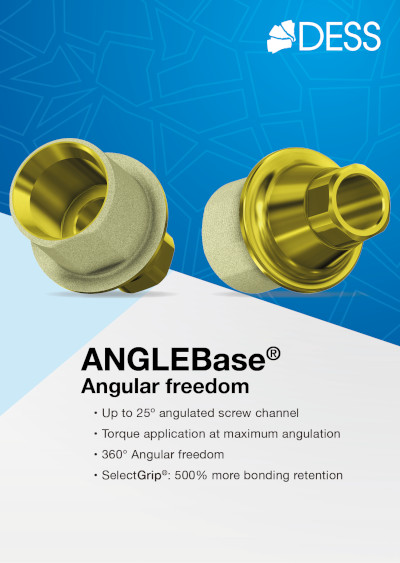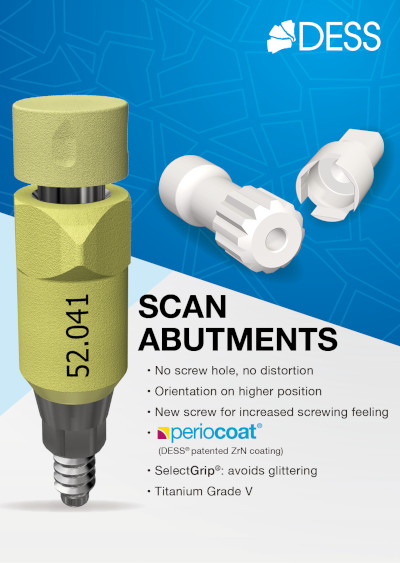Multi-unit & Uniabutments for dental implants
DESS Dental Multi-unit abutments are compatible with most implant systems on the market. Discover all the connections and their features. On the other hand, transepithelial abutments act as a connection between the implant and the dental prosthesis in multiple restorations. In addition, they have several features that improve the comfort and precision of treatment and prevent secondary complications.
Product Catalog
DESS® Multi-unit 100% compatible with Multi-unit® abutments
DESS® Dental Multi-unit abutments are the best solution for multiple direct screw-retained or mixed restorations with the combined use of straight or angled interfaces, even in cases of large divergence between implants. It is also possible to screw the DESSLoc® system directly into a Multi-unit® for removable dentures.
Its design allows an optimal fit between the abutment and the implant connection, ensuring a correct insertion axis of the prosthesis-implant connection. In addition, they are incorporated in the free CAD/CAM libraries of DESS® for the Exocad®, 3Shape® and Dental Wings® systems, facilitating the free design of frameworks.
Multi-unit abutments for implants of the highest quality and at the best price
DESS® Dental Multi-unit abutments are an immediate loading solution specially designed for direct screw-retained multiple restorations of both 4 and 6 implants, as well as bridges and on bar and hybrid dentures. They are made of Titanium Grade V ELI and some connections include the DLC (Diamond Like Carbon) coated screw for optimal retention and increased preload.
• Straight Multi-unit abutments: for clinical restorations using implants with a divergence of up to 40°
• Angled Multi-unit abutments: Available in 17° and 30°, they are the perfect solution for restorations with divergence, those clinical situations where a correction of the treatment angulation is necessary
All DESS® Multi-unit abutments are supplied with a transporter to make it easier for the dentist to place the abutment in the mouth. The conveyor for angled abutments is designed to act as a contact point with the screw to prevent it from falling out during placement.




